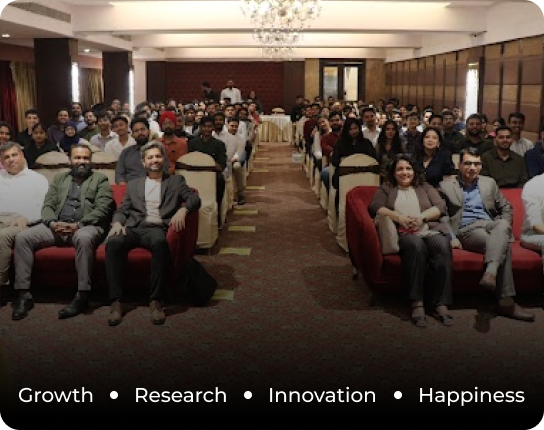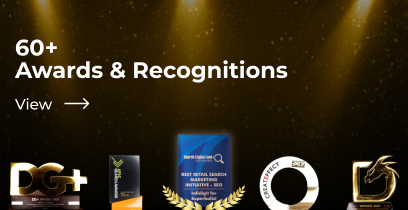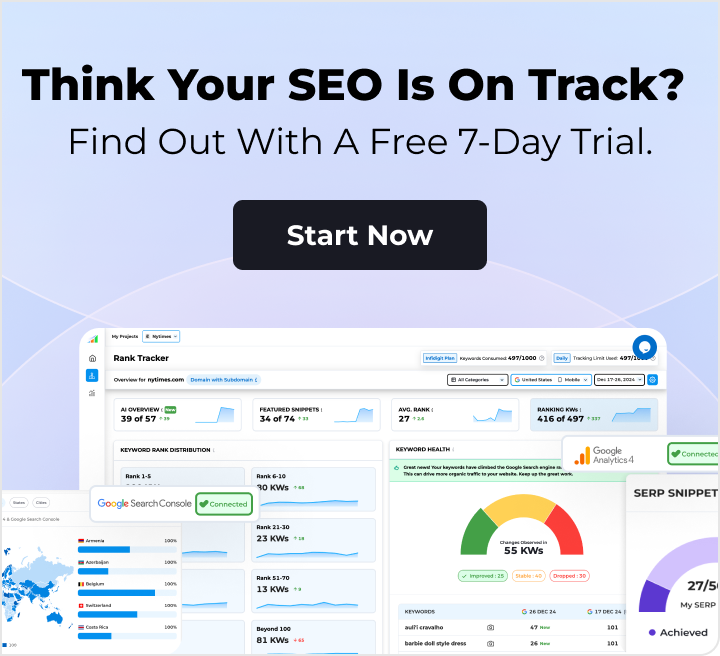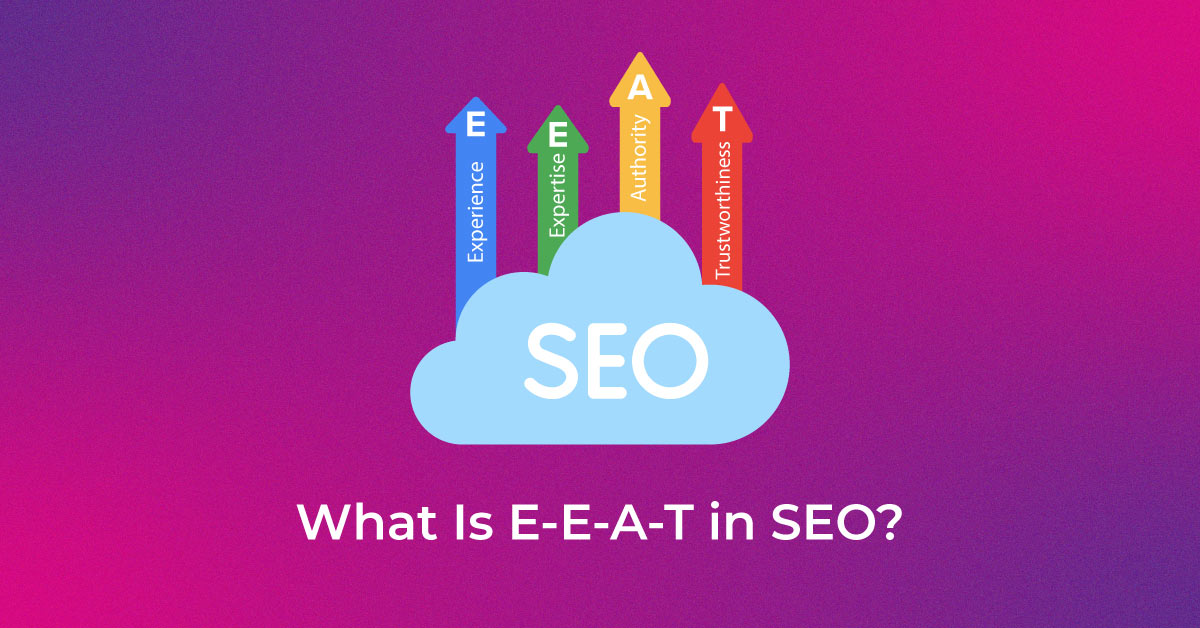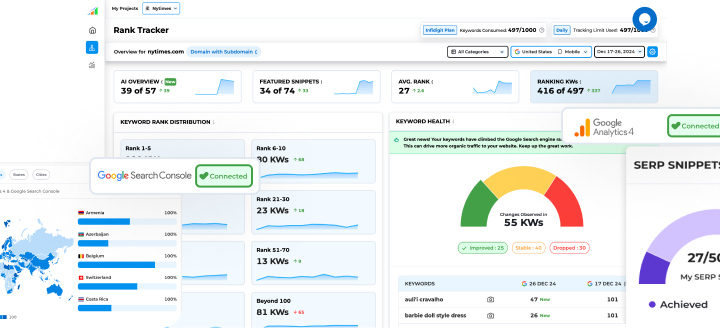Introduction to Marketing Strategy
A well-defined marketing strategy is the backbone of any successful business, guiding your efforts to reach and engage your target audience effectively. It encompasses a range of tactics, from traditional advertising to digital marketing techniques, all aimed at driving growth and enhancing brand visibility. One of the key components of a solid strategy is leveraging SEO services to improve your website’s search engine ranking and organic reach. Additionally, integrating content marketing services into your strategy ensures that you create valuable, relevant content that resonates with your audience, driving engagement and conversions. In this blog, we’ll explore the essentials of a marketing strategy and share expert tips to help you build one that drives real results.
What is Marketing Strategy?
Marketing Strategy is your blueprint for reaching potential customers and converting them into loyal clients. It outlines how you present your business, communicate your value, and understand whom you’re aiming to attract. Imagine a map that guides your promotional efforts, indicating the best routes to take to connect with your audience and outmaneuver the competition.
Navigating the Marketing Landscape
Navigating the marketing landscape is a dynamic process of adapting to advanced technology, changing consumer behaviors, and emerging channels for engagement. It’s about forecasting trends and being agile enough to pivot strategies as new platforms rise and data analytics become increasingly sophisticated. Marketers must stay informed about the global economic climate, regulatory shifts, and cultural movements to effectively resonate with consumers in a hyper-connected world.
Examples of Marketing Strategies
From targeted Instagram campaigns to AI-driven personalization, marketing strategies come in various forms tailored to different business objectives and customer profiles. A well-thought-out go-to-market strategy can include leveraging influencer partnerships to amplify product launches or focusing on SEO and content marketing for organic growth. For example, a company like Nike uses celebrity endorsements combined with a strong social media presence to captivate a global audience. Meanwhile, a B2B organization might focus on LinkedIn content and industry events to build authority and nurture leads.
Types of Marketing Strategy
The umbrella of marketing strategy covers diverse approaches, including:
- Social Media Marketing Strategy: Encompasses techniques for engaging with audiences on platforms like Facebook, Instagram, and TikTok through both organic and paid content.
- Email Marketing Strategy: Involves building relationships with customers via personalized, targeted email campaigns to promote products, share content, or nurture leads.
- Inbound Marketing Strategy: Focuses on creating valuable content and experiences tailored to attract and retain customers by aligning with their intentions and needs.
- Content Marketing Strategy: Centers on crafting and distributing relevant and consistent content to educate, entertain, or inspire potential customers, often leading to higher engagement and brand loyalty.
- Editorial Strategy: Similar to content marketing but often used by brand publishers to maintain a consistent, authoritative voice across all published content.
- Marketing Communications Strategy: Deals with how a brand communicates its messaging across various channels to ensure clarity, consistency, and effectiveness.
- Digital Marketing Strategy: A comprehensive approach that encompasses all digital channels such as SEO, PPC, social media, and email for boosting online presence and sales.
- Internal Marketing Strategy: Targets the internal audience of an organization, aiming to align and motivate employees with the company’s mission and goals.
- Public Relations Strategy: Aims at shaping public perception and maintaining beneficial relationships with stakeholders, media, and the public.
- SEO Strategy: Designed to increase a brand’s organic search rankings, improve visibility, and drive traffic through optimized content and website structure.
How to Create a Successful Marketing Strategy
Defining Your Brand and Target Audience
Defining your brand means establishing a clear identity, with values and messaging that resonate authentically with your target audience. It’s the personality of your business and the promise you convey to customers. To crystalize your brand, you should articulate your mission, the benefits of your products or services, and what distinguishes you from the competition.
When it comes to identifying your target audience, think about who needs your product or service most and who is most likely to purchase it. Consider factors like age, location, income level, interests, and pain points. Getting to know your audience as real individuals helps tailor your marketing to speak directly to their desires and concerns, thus creating a stronger connection.
Setting Clear, Achievable Goals
Setting clear, achievable goals is about striking a balance between ambition and realism. When crafting your marketing objectives, aim for targets that challenge your team but remain within the realms of possibility. Specificity helps here – rather than vague aspirations, focus on precise metrics like increasing website traffic by a certain percentage or generating a set number of leads within a quarter. Utilize the SMART criteria: goals should be Specific, Measurable, Achievable, Relevant, and Time-bound. This approach minimizes distractions and helps everyone stay on track toward common endpoints.
Innovative Marketing Strategy Tips
1. Embrace Marketing Automation and AI
Embrace marketing automation and AI SEO tools to revolutionize the way you connect with your audience. Automation streamlines repetitive tasks like email campaigns and social media posting, allowing you to allocate valuable time to creative and strategic endeavors. AI SEO tools take this further by predicting customer behaviors, personalizing communications, and even crafting content. In the upcoming years, AI’s role will only grow, providing deeper insights and efficiency. Invest in AI-driven tools to enhance your marketing efforts, ensuring real-time engagement and more meaningful interactions with customers at every touchpoint.
Top 5 Features:
- Predictive analytics for customer behaviors
- Automated content creation and curation
- Dynamic personalization engines
- Real-time engagement tracking
- Efficient lead nurturing and scoring systems
Five Benefits:
- Maximizes efficiency by reducing manual workload
- Enhances customer experience through personalized marketing
- Increases ROI with targeted campaigns
- Provides valuable insights through data analytics
- Adapts and improves marketing strategies through machine learning
Best for: Businesses seeking to scale their marketing efforts, improve customer engagement, and gain competitive advantage through technological innovation.
2. Leverage Data Analytics for Precision Targeting
Leveraging data analytics for precision targeting empowers you to make informed decisions, ensuring that your marketing messages reach the right audience at the right time. With sophisticated algorithms and richer consumer data, you’ll be able to segment audiences with greater accuracy and predict purchasing patterns, thus optimizing campaign performance. By analyzing customer interactions across multiple touchpoints, you can craft hyper-targeted campaigns that resonate on a personal level, boosting conversion rates and enhancing ROI.
Top 5 Features:
- Advanced customer segmentation capabilities
- Predictive analytics for purchasing patterns
- Multichannel tracking and attribution modeling
- Real-time performance monitoring
- Integrated customer data platforms (CDP)
Five Benefits:
- Increases campaign relevance and engagement
- Drives higher conversion rates through personalized marketing
- Efficiently allocates resources to high-performing channels
- Improves product development with customer feedback loops
- Enhances customer satisfaction through better understanding of needs
Best for: Marketers aiming for high-precision campaigns with granular targeting and those who wish to maximize the impact of each marketing dollar spent in a data-driven decision-making environment.
3. Harness the Power of Personalization
Harnessing the power of personalization is about more than just addressing customers by name. It’s about tailoring experiences, offers, and content to individual preferences and behaviors, based on the data you’ve collected. Personalization will likely be the standard, not the exception. Utilize AI and machine learning to predict what your customers want before they even search for it, and create bespoke customer journeys for different segments. Personalization fosters deeper connections, as customers feel seen and valued, leading to increased brand loyalty and higher conversion rates.
Top 5 Features:
- Behavioral tracking and analysis
- Dynamic content creation and delivery
- Real-time recommendations engines
- Personalized email marketing sequences
- Individualized offer and promotion targeting
Five Benefits:
- Greater customer engagement through relevant experiences
- Higher conversion rates with offers that resonate
- Enhanced loyalty and customer retention
- Better customer satisfaction as needs are anticipated
- Streamlined shopping experiences with fewer pain points
Best for: Businesses that aspire to elevate customer experience by delivering content, products, and services tailored to the unique preferences of their audience, fostering brand differentiation and customer loyalty.
Digital Marketing Aspects You Can’t Ignore
1. Mastering SEO for Brand Visibility
Mastering SEO for brand visibility is essential for any business looking to thrive in the digital era. Incorporating SEO into your broader digital marketing strategy ensures your website appears prominently in organic search results, making it more likely that potential customers will find you. As search engines evolve, staying abreast of the latest algorithms and best practices is crucial. Optimize not only for keywords but also for user intent, mobile-friendliness, and local search. Building a robust backlink profile and ensuring fast load times are also key. By prioritizing user experience alongside technical optimization, your search rankings are bound to improve.
Top 5 Features:
- Keyword research and optimization
- Mobile optimization and local SEO strategies
- Quality backlink development
- Site speed and technical SEO audits
- Content that addresses user intent
Five Benefits:
- Increased organic traffic without the cost of ads
- Improved brand credibility and trustworthiness
- Higher conversion rates from targeted keyword traffic
- Enhanced user experience on your site
- Competitive edge in search engine rankings
Best for: Companies of all sizes that wish to establish a strong online presence, attract a steady stream of organic traffic, and build a foundation of credibility and authority in their niche.
2. Optimizing for Voice Search and Mobile Users
Optimizing for voice search and mobile users is no longer just futuristic thinking; it’s a necessity. With the increasing prevalence of virtual assistants and mobile internet browsing, your content must be accessible and easily interpretable by voice-driven devices. This involves incorporating natural language and question-based phrasing into your content, and ensuring that your website is responsive and loads quickly on smartphones and tablets. By doing so, you’ll tap into the growing segment of users who rely on voice commands to find information, and cater to the on-the-go lifestyle that demands mobile accessibility.
Top 5 Features:
- Voice search optimization for natural language queries
- Mobile responsive website design
- Fast loading speed for mobile users
- Local SEO for location-based voice queries
- Structured data markup for enhanced voice search results
Five Benefits:
- Stays ahead of the curve in search technology trends
- Increases visibility in voice and mobile search results
- Enhances user experience for mobile visitors
- Taps into local market through location-based searches
- Boosts potential for featured snippets in voice search results
Best for: All businesses, especially local service providers, e-commerce platforms, and those looking to optimize their online content for the most advanced and user-friendly search experiences.
The Rise of Content and Influencer Marketing
Crafting Compelling Storytelling Content
Crafting compelling storytelling content means going beyond facts and features to engage your audience with narratives that resonate emotionally. It’s about painting a picture of your brand’s journey, challenges, and successes that aligns with your audience’s values and experiences. Effective stories humanize your brand and create memorable connections, setting you apart in a crowded marketplace. They can articulate your brand mission, showcase customer testimonials, or tell the story of your company’s impact on the community. Be authentic, be captivating, and let your brand’s unique voice shine through the stories you tell.
Building Relationships with Key Influencers
Building relationships with key influencers can exponentially amplify your brand’s reach and credibility. When you collaborate with influencers who share your brand values and cater to your ideal audience, you harness their trust and influence to endorse your message. Start by identifying influencers whose followers align with your target market, then craft a partnership strategy that benefits both parties. This can range from sponsored content to co-created products. Influencer partnerships should feel authentic; forced associations can backfire, so choose collaborators who genuinely resonate with your brand.
Utilizing Social Media Platforms Strategically
Engaging Audiences on Emerging Social Networks
Engaging audiences on emerging social networks is an opportunity to tap into new communities and gain a first-mover advantage in spaces where your competitors may not yet be active. Staying attuned to digital trends allows you to discover platforms that resonate with niche markets or the early adopters of technology. Consider platforms like TikTok, Clubhouse, or even niche forums that align with your product or industry. Crafting a presence on these platforms requires a tailored approach; content that works on mainstream sites may not hit the mark on these alternative spaces. Authentic engagement, innovative content formats, and community building are key.
Capitalizing on Social Advertising Innovations
Capitalizing on social advertising innovations involves being at the forefront of how social platforms leverage technology to create more immersive and effective ad experiences. With platforms continually updating algorithms to prioritize paid media, your strategy needs to adapt accordingly. This means utilizing tools like augmented reality filters on Snapchat, shoppable posts on Instagram, or interactive stories to captivate your target audience. Perfect the art of retargeting to remind prospects of their interest in your offerings and lookalike audiences to find new customers who resemble your best existing ones. The goal is to blend the line between content and commerce, so users feel naturally inclined to engage with your brand.
Adapting to the Shifting Consumer Expectations
Focusing on Customer Experience and Retention
Focusing on customer experience and retention is about delivering consistently positive interactions that satisfy and exceed customer expectations at every stage of their journey with your business. Retaining customers not only costs less than acquiring new ones but also can generate more value over time as repeat customers tend to spend more and advocate for your brand. To enhance retention, prioritize customer service excellence, create loyalty programs, and gather feedback regularly to improve your offerings. Personalization plays a substantial role here, as tailored experiences can make customers feel valued and understood, encouraging them to continue doing business with you.
Ethical Marketing and Social Responsibility Trends
Ethical marketing and social responsibility trends are steering businesses towards practices that prioritize not just profit, but the well-being of society and the environment. Expect consumers to be even more discerning, favoring brands that demonstrate a genuine commitment to causes like sustainability, fair trade, and charitable initiatives. Ethical marketing isn’t about opportunistic virtue-signaling; it’s about integrating socially responsible values into every aspect of your operations, from sourcing materials to advertising. Transparency is key – customers should be able to see the concrete actions you’re taking to make a positive impact.
Budgeting and Resource Allocation for Marketing
Calculating ROI and Justifying Marketing Spend
Calculating ROI (Return on Investment) and justifying marketing spend are critical for assessing the effectiveness of your marketing initiatives and for making data-driven budgetary decisions. To calculate ROI, track and measure the costs of your marketing campaigns against the revenue these campaigns generate. Tools and platforms that offer analytics can simplify this process by providing insights into campaign performance and customer acquisition costs. Clear, quantifiable metrics help justify your marketing spend to stakeholders by demonstrating the direct impact on the business’s bottom line. Accurate ROI calculations enable you to optimize your marketing budget for maximum profitability.
Creative Use of Budgets for Maximum Impact
Creative use of budgets for maximum impact involves thoughtfully distributing resources to innovative marketing channels and techniques that promise the best returns. Integrating pricing strategies in marketing into your approach can further enhance resource allocation by aligning promotional efforts with consumer value perception. Instead of only investing in proven methods, allocate a portion of your budget to experimental or emerging tactics that could give you an edge. For example, virtual reality experiences or guerrilla marketing stunts can create a buzz at a lower cost than traditional media spends. It’s about achieving more with less, through strategic partnerships, co-marketing opportunities, or leveraging user-generated content. Maintaining agility within your budget also allows for real-time shifts based on performance metrics and market trends.
Measuring Success and Analyzing Marketing Efforts
Key Performance Indicators (KPIs)
Key Performance Indicators (KPIs) will reflect the evolving marketing landscape, where data-driven decision-making becomes paramount. Real-time analytics, AI, and machine learning will enable more nuanced and predictive measures of success. Traditional KPIs like sales revenue and website traffic will remain fundamental but expect an increased emphasis on customer engagement metrics, retention rates, and sentiment analysis. Conversion rates will be dissected further to understand micro-conversions along the user journey. Attribution modeling will also grow more sophisticated, offering a clearer picture of how different touchpoints contribute to sales and loyalty.
Adapting and Evolving Strategies Based on Analytics
Adapting and evolving strategies based on analytics is fundamental for staying competitive and relevant in a rapidly changing market. Analytics provide insight into what is or isn’t working, informing tactical shifts that optimize marketing effectiveness. By monitoring KPIs and interpreting data patterns, you can pivot away from underperforming tactics and double down on strategies that show promise. It’s a continuous feedback loop—implement, measure, analyze, and refine. Embrace A/B testing, sentiment analysis, and customer feedback as tools to guide your adjustments. This agile approach to strategy ensures you’re always aligned with consumer needs and preferences.
Preparing for Future Challenges and Opportunities
Staying Ahead of Technological Advancements
Staying ahead of technological advancements means keeping your finger on the pulse of emerging tech that could disrupt or enhance your marketing efforts. New tools and platforms could significantly impact how you engage with customers, analyze data, and position your brand. Make it a priority to explore innovations like AI, augmented and virtual reality, and the Internet of Things (IoT). Attend industry conferences, participate in webinars, and follow thought leaders to stay updated. Invest time and resources in upskilling your team and experimenting with new technologies to capitalize on their benefits early on.
Anticipating and Adapting to Regulatory Changes
Anticipating and adapting to regulatory changes involves staying informed about laws and guidelines that could impact your marketing activities. As privacy concerns and digital ethics take center stage, it’s crucial to prepare for tighter regulations on data usage, consumer rights, and advertising practices. Establish a compliance strategy and regularly review your policies to align with new legislation, such as GDPR or CCPA. Being proactive not only safeguards against legal repercussions but can also enhance consumer trust by showing your commitment to their privacy and protection.
FAQs
What Is a Marketing Strategy and Why Is It Important?
A marketing strategy is a comprehensive plan formulated to achieve specific business objectives by communicating the benefits of your products or services to your target audience. It’s vital because it gives you a clear direction, helps align your team with the company’s vision, and provides a framework to evaluate your marketing efforts’ effectiveness. Without a strategy, your marketing efforts may lack coherence and fail to drive desired results, leading to wasted resources and missed opportunities.
How Do I Create a Marketing Strategy That’s Future-Proof?
Creating a future-proof marketing strategy involves staying adaptable, investing in ongoing market research, and embracing technological advancements. Focus on building flexibility into your strategy to pivot as needed based on consumer trends and market conditions. Invest in continuous learning and keep your tactics aligned with your core business values, ensuring that even as the tools and platforms evolve, your strategy remains authentic and resonant with your audience.
What Are the Best Tools to Support My Marketing Strategy?
The best tools to support your marketing strategy will likely be those that offer advanced analytics, AI-powered automation, and customer relationship management features. Look for platforms that integrate with a range of channels, offer real-time data insights, and provide scalable solutions as your business grows. Tools like HubSpot for comprehensive inbound marketing, Google Analytics for website insights, and SEMrush for SEO and competitive analysis are potential staples, along with emerging technologies tailored to new marketing paradigms.
Popular Searches
How useful was this post?
5 / 5. 1






